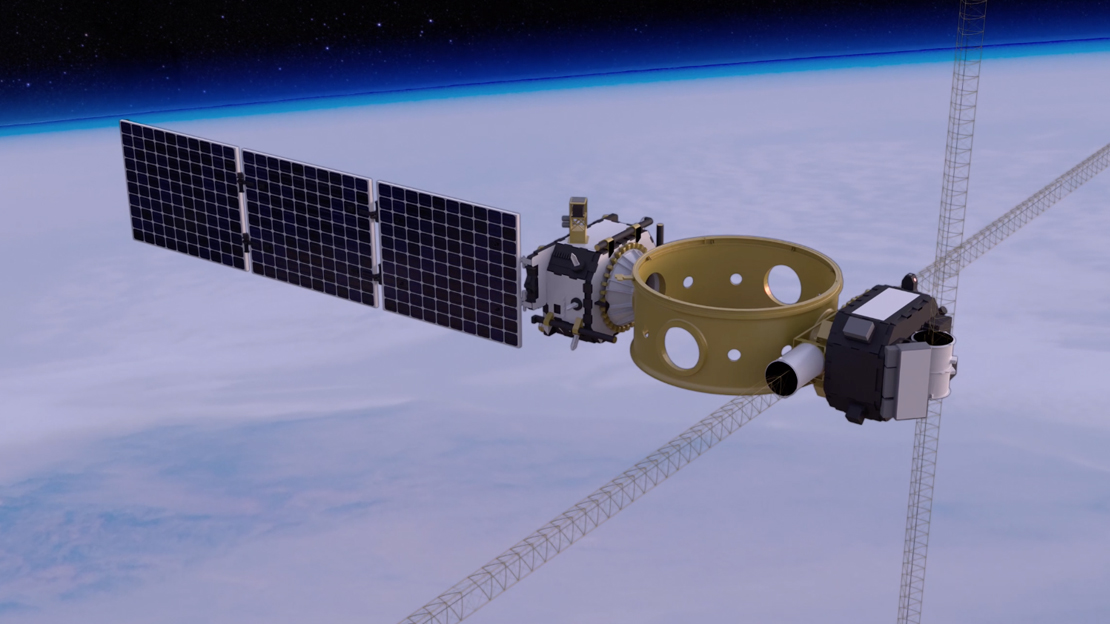AFRL launched largest unmanned space structure on SpaceX Falcon Heavy
KIRTLAND AIR FORCE BASE, N.M. — A satellite spanning nearly the length of a football field was launched on board a SpaceX Falcon Heavy rocket from Cape Canaveral, Fla., June 25.
Described by Elon Musk as the “toughest rocket launch ever,” SpaceX delivered 24 experimental satellites into four different orbits, of which the Air Force Research Laboratory’s Demonstration and Science Experiments, or DSX, spacecraft was the largest. The first of its kind, DSX was designed and built at the Air Force Research Laboratory at Kirtland AFB.
“The satellite is conducting new research to advance understanding of the Van Allen radiation belts and their effect on spacecraft components, and valuable information is already being received,” said Col. Eric Felt, AFRL Space Vehicles Directorate director. “We expect DSX to conduct on-orbit experiments for at least a year.”
“The Air Force is interested in operating satellites in the region where DSX is collecting data. This will allow us to better understand the environment through its various experiments,” said Dr. James McCollough, DSX principal investigator. “This is a region where Very Low Frequency (VLF) radio waves strongly interact with electrons that are hazardous to spacecraft. A particularly exciting aspect of DSX is the ability to actively transmit VLF signals to study their influence on the electron population in a completely new way. This will allow a more thorough understanding of a key process governing the radiation environment.”
The satellite is currently in “Launch and Early Operations” where the operations team works with DSX scientists and engineers to perform checkouts on various satellite components, deploy the antenna booms, and prepare for data collection within the Van Allen radiation belts, said Lt. Col. James Caldwell, DSX mission director.
On July 12, the longer pair of the antenna booms (80 or 262 feet meters tip-to-tip) was successfully deployed as the largest unmanned structure ever in space. Jeffrey Christmas, DSX program manager, explained that the exceptionally long length of this antenna allows DSX to transmit the VLF radio waves used for planned experiments based on the longer wavelengths of these frequencies.
Throughout the coming months, researchers at AFRL will be sharing their findings with the public, through its website and social media platforms. “We know there are many out there who will be interested to see the data as it comes in,” said Felt.
The DSX program is led by the AFRL Space Vehicles Directorate at Kirtland AFB, New Mexico, with key team members from the Air Force Space and Missile Systems Center also located at Kirtland Air Force Base.


